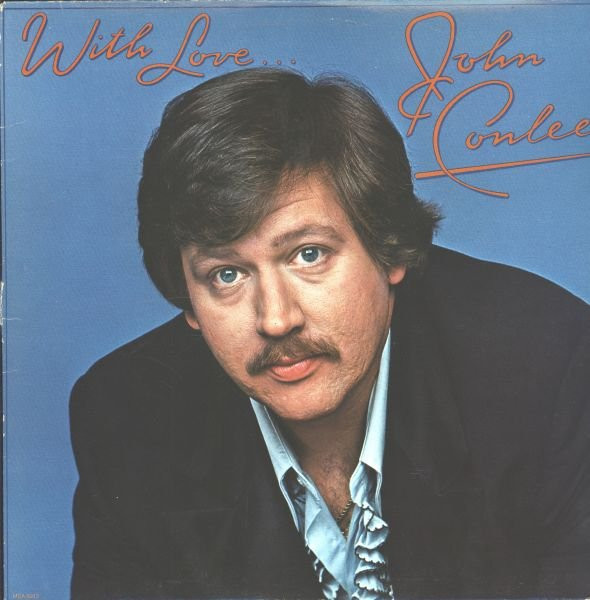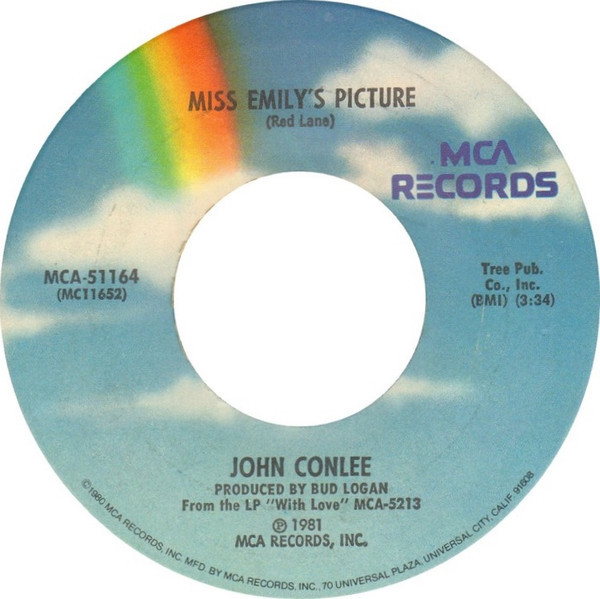John Conlee, a name synonymous with authentic country music, might not be the first artist that springs to mind when discussing genre titans. Yet, for those who delve deeper into the heart of country’s storytelling tradition, Conlee stands as a vocal powerhouse, capable of delivering narratives with raw emotion and unforgettable resonance. Among his impressive catalog, “Miss Emily’s Picture” emerges as a particularly haunting example of his artistry, a song that burrows into the listener’s psyche and lingers long after the final note fades.
 John Conlee Banner
John Conlee Banner
This Red Lane-penned masterpiece, released in 1980, isn’t your typical feel-good country tune. Instead, “Miss Emily’s Picture” plunges into the depths of grief and obsession, painting a stark portrait of a man consumed by the memory of lost love. The song’s power lies not in grand pronouncements or dramatic flourishes, but in its unflinching portrayal of everyday despair, amplified by Conlee’s distinctive baritone.
The Unsettling Narrative of Loss and Longing
“Miss Emily’s Picture” unfolds as a series of vignettes from the life of a man struggling to cope with the absence of Miss Emily. We are given glimpses into his fractured routine: straightening her picture by his bed, seeking solace (and perhaps oblivion) in bourbon-laced coffee at work, and carrying her image with him to crowded bars, only to find himself isolated in his pain.
The lyrics paint a vivid picture of a man unraveling. Phrases like “chewed fingernails,” “scattered clothes,” and “walking the floor” evoke a sense of restlessness and anxiety. The repeated act of straightening Miss Emily’s picture becomes a poignant symbol of his futile attempts to bring order to a life shattered by loss. It’s a small, repetitive action that underscores the overwhelming chaos within him.
 John Conlee With Love Album Cover
John Conlee With Love Album Cover
What makes “Miss Emily’s Picture” so impactful is its relatability, despite its bleakness. The song taps into the universal experience of heartbreak and the often-unhealthy ways we try to manage profound loss. The narrator’s obsessive behavior, while unsettling, stems from a deep, undeniable love for Miss Emily. We never learn the specifics of their relationship or her absence, leaving room for listeners to project their own experiences of love and loss onto the narrative. This ambiguity enhances the song’s emotional resonance, making it feel intensely personal and deeply affecting.
John Conlee’s Vocal Delivery: A Masterclass in Subtlety and Emotion
John Conlee’s vocal performance is crucial to the song’s success. His rich, resonant baritone is capable of conveying both strength and vulnerability, and he navigates the emotional nuances of “Miss Emily’s Picture” with remarkable skill. He doesn’t oversing or resort to melodrama. Instead, he delivers the lyrics with a quiet intensity, allowing the weight of the story to emerge from the subtle inflections and carefully controlled phrasing.
Conlee’s ability to embody the narrator’s pain without resorting to histrionics is a testament to his artistry. He understands that true heartbreak is often experienced in quiet moments of despair, in the mundane routines that become saturated with sorrow. His performance is a masterclass in understated emotion, drawing the listener into the narrator’s world and making his pain palpable.
Red Lane’s Songwriting: Crafting Darkness with Nuance
Red Lane, the songwriter behind “Miss Emily’s Picture,” was known for his ability to explore the darker corners of human experience within the framework of country music. His catalog includes other songs that delve into complex emotions and challenging themes, such as “You’ve Been Quite a Doll Raggedy Ann” and “Till I Get it Right.”
In “Miss Emily’s Picture,” Lane crafts a narrative that is both specific and universal. He provides just enough detail to create a vivid picture of the narrator’s plight, but he also leaves enough unsaid to allow the listener to fill in the blanks. The song’s power comes from its suggestive imagery and its willingness to confront uncomfortable emotions head-on. Lane doesn’t offer easy answers or resolutions; instead, he presents a raw and honest portrayal of grief’s lingering impact.
 John Conlee Miss Emilys Picture Single Cover
John Conlee Miss Emilys Picture Single Cover
“Miss Emily’s Picture” in the Pantheon of Classic Country Heartbreak Songs
“Miss Emily’s Picture” deserves to be mentioned alongside other iconic country songs that explore themes of heartbreak and loss. It shares a kinship with George Jones’s “He Stopped Loving Her Today,” Gene Watson’s “Farewell Party,” and Vern Gosdin’s “Do You Believe Me Now.” These songs, like “Miss Emily’s Picture,” are unflinching in their portrayal of pain, and they resonate deeply because they tap into fundamental human emotions.
While some of John Conlee’s other hits, such as “Rose Colored Glasses” and “Backside of Thirty,” showcase a lighter side of his artistry, it’s in songs like “Miss Emily’s Picture” that his true depth and power as a vocalist and interpreter of song are most evident. This track, from his With Love album, reached number two on the Billboard country charts in 1981, proving that even songs that delve into darkness can find a wide audience when delivered with authenticity and artistry.
A Timeless Song of Enduring Grief
“Miss Emily’s Picture” remains a testament to the power of country music to explore the full spectrum of human emotion. It’s a song that is both unsettling and deeply moving, a stark reminder of the enduring impact of loss and the complexities of grief. John Conlee’s masterful performance, combined with Red Lane’s evocative songwriting, ensures that “Miss Emily’s Picture” will continue to haunt and captivate listeners for generations to come, solidifying its place as a classic within the country music canon. It’s a song that demands to be heard, not just for its musicality, but for its unflinching look into the human heart.

